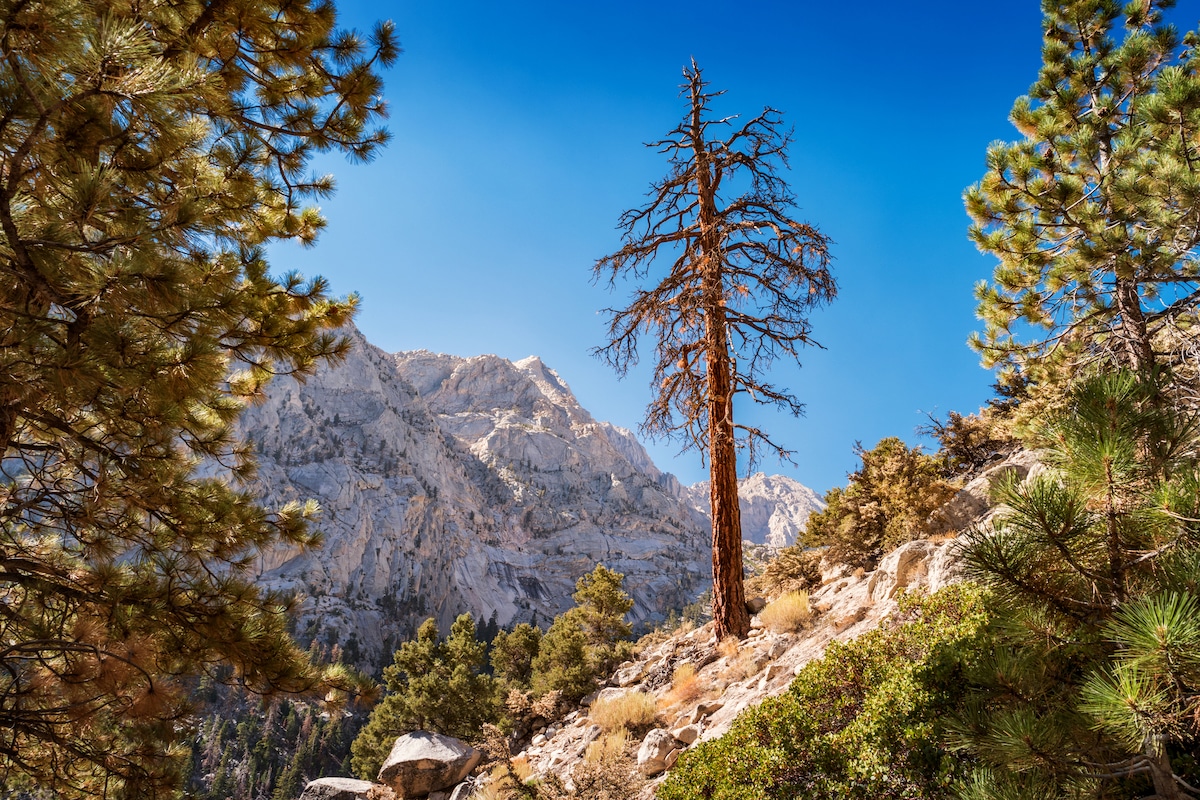Products You May Like
A dead ponderosa pine tree in the Sierra Nevada mountains of California. benedek / iStock / Getty Images Plus
 Why you can trust us
Why you can trust us
Founded in 2005 as an Ohio-based environmental newspaper, EcoWatch is a digital platform dedicated to publishing quality, science-based content on environmental issues, causes, and solutions.
Ponderosa pine forests in California’s Sierra Nevada mountain range have been an important source of storage for atmospheric carbon. But a drought and pest invasion from 2012 to 2015 wiped out these trees. Now, researchers have found that it is unlikely for the forests to recover to their densities before the megadrought.
From 2012 to 2015, a megadrought and an infestation of western pine beetles caused massive die-offs of ponderosa pine trees in the Sierra Nevada. During this time period, experts estimated that around 129 million trees of varying species, including the ponderosa pines, died out.
This meant the carbon stored in these trees, which are an important carbon sink, was then released as the trees died and decayed.
More From EcoWatch
Forest regeneration for pines in this area would be difficult, as researchers described in a study published in the journal Frontiers in Environmental Science. Climate change makes future infestations more likely, so if the forest recovered, there could be an increased chance of another major die-off from the western pine beetles.
These beetles are more likely to take over the Sierra Nevada forests as climate change makes more favorable living conditions for bark beetles. According to the USDA, bark beetles like the western pine beetle can experience faster larval development and better survival rates when temperatures are warm (but not overly hot). Further, drought conditions put stress on the trees, making them easier targets for the beetles to take over.
For now, the diminished forests leave the bark beetles with no hosts, making another major infestation and another large die-off event less likely.
“Some carbon loss won’t be resequestered in trees, but fewer trees on the landscape dampens the severity of western pine beetle outbreaks,” Zachary Robbins, a postdoctoral researcher at Los Alamos National Laboratory and corresponding author of the study, explained in a statement. “The forest seems to reach an equilibrium at a certain point.”
While forests can sequester over 10% of emissions in the U.S., the researchers warned that carbon budgeting must consider bark beetle outbreaks and other stressors, like drought and wildfires, that impact forest regeneration. Plus, with ongoing climate change, we could expect to see similar effects to the damage during the 2012-2015 megadrought in a shorter timespan.
“In the past, a three-year drought would have substantial impact on tree mortality,” Chonggang Xu, a senior scientist at Los Alamos National Laboratory study co-author said. “But in a warmer future, a two-year drought could have similar consequences.”
While this research was specific to California and ponderosa pine forests, the problem is likely to be replicated across forests in the western U.S. The authors suggested active forest management to minimize risk of major beetle outbreaks and massive tree die-offs in the future. In a 2022 study by Robbins, Xu and additional researchers, the team found anticipated that up to 40% more ponderosa pine trees could die off from beetle infestations for every degree Celsius increase of global warming.
Subscribe to get exclusive updates in our daily newsletter!
By signing up, you agree to the Terms of Use and Privacy Policy & to receive electronic communications from EcoWatch Media Group, which may include marketing promotions, advertisements and sponsored content.
